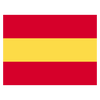For those who aren’t so familiar with fascia, let’s do a quick overview. If I were to stick a needle down through your skin, I would first go through all the layers of skin, then I’ll hit a layer of subcutaneous fat, then a layer of superficial fascia, then a layer of deep fascia, and then muscle, etc. Fascia is defined as a band or sheet of connective tissue, primarily collagen, beneath the skin that attaches, stabilizes, encloses, and separates muscles and other internal organs. It’s tough stuff. It’s also the cause of a lot of pain because it contains a lot of nerve endings. Studies are actually finding that fascia has 10 times the sensory receptors as muscle! So maybe this stuff is important when it comes to pain.

There is a trick to relaxing this posterior fascial line. Roll your arches on a RAD ball for a couple of minutes.
Here’s the test so you can see that it works. Before rolling out your arches, stand with your feet together and knees straight. Bend forward, keeping your knees straight and try to touch your toes. See how far you get. Now sit down and roll your arches hard enough to be slightly uncomfortable but not truly painful. Do this for 2 minutes. Then stand and repeat the test. You’ll go further. But wait…why did that happen? By rolling out your arches, you trigger a release along that posterior fascial line that goes all the way up to your neck. So when you bend forward, all the fascia on the backside of your body is able to stretch further. For those with chronic neck and low back pain, this is a good daily ritual to try. See if it makes any difference. Of course, if you have chronic neck or low back pain, you should probably be evaluated by a medical professional, like a physical therapist, but this trick may help lower your pain a little.
Written By:




















